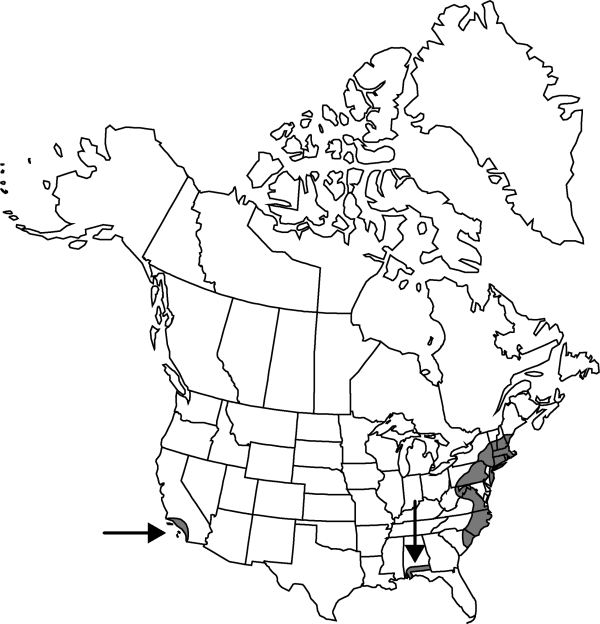Show Lower Taxa
Difference between revisions of "Beta vulgaris"
Sp. Pl. 1: 222. 1753.
IntroducedIllustrated
imported>Volume Importer |
RevisionBot (talk | contribs) m (Bot: Adding category Revised Since Print) |
||
| Line 66: | Line 66: | ||
}}<!-- | }}<!-- | ||
| − | -->[[Category:Treatment]][[Category:Beta]] | + | --> |
| + | |||
| + | [[Category:Treatment]] | ||
| + | [[Category:Beta]] | ||
| + | [[Category:Revised Since Print]] | ||
Latest revision as of 17:02, 6 November 2020
Roots fibrous or fleshy. Leaves: petiole 1/2–2/3 or equaling blade length; blade dark red to green, usually with pronounced midrib, somewhat fleshy. Inflorescences cymes, 1–8-flowered, interrupted towards base. Perianth urn-shaped; segments 3–5 × 2–3 mm; receptacle pelviform. Achenes 5–11 per cluster, 3–5 mm. Seeds 1.5–2 mm.
Distribution

Ala., Calif., Conn., Maine, Mass., N.C., N.H., N.J., N.Y., Pa., R.I., S.C., Va., Vt., W.Va., s Europe.
Discussion
Subspecies ca. 3 (2 in the flora).
Selected References
None.
Key
| 1 | Basal leaves usually longer than 10 cm; stems erect; cymes 2-8-flowered; roots swollen, fleshy | Beta vulgaris subsp. vulgaris |
| 1 | Basal leaves shorter than 10 cm; stems procumbent to erect; cymes 1-3-flowered; roots fibrous to ± swollen, not fleshy | Beta vulgaris subsp. maritima |